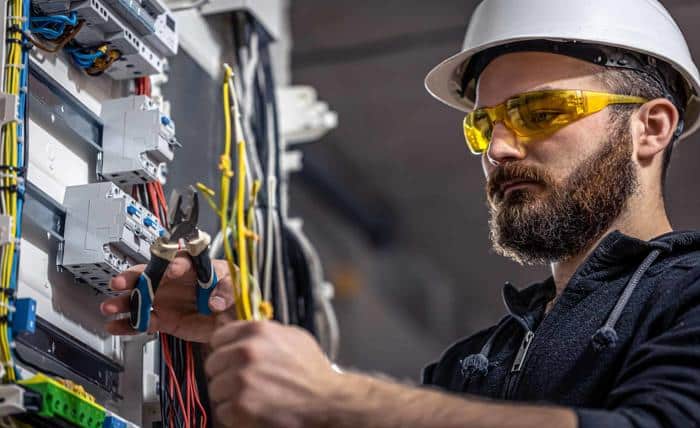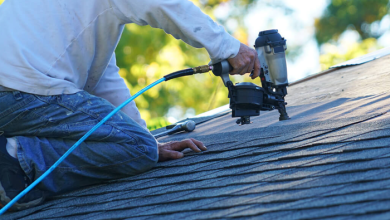
Commercial buildings rely on dependable electrical systems for operations, equipment, lighting, and HVAC. However, high energy demands can cause issues that, if ignored, may lead to costly repairs, disruptions, or safety risks. Business owners and property managers should recognize early signs of trouble. Understanding common electrical challenges helps ensure timely fixes, reducing downtime and preventing major damage.
To address these common electrical issues effectively, it’s crucial to engage a professional who understands the complexities of commercial systems. A skilled commercial electrician in San Jose can provide comprehensive solutions tailored to the unique needs of your building, ensuring safety and efficiency. They can conduct thorough inspections, identify potential hazards, and implement preventive measures to minimize downtime and costly repairs. By partnering with an expert, businesses can maintain optimal electrical performance, reduce energy consumption, and enhance the overall safety of their premises. This proactive approach not only safeguards the infrastructure but also contributes to a more sustainable and reliable electrical system.
1. Frequent Circuit Breaker Tripping
Frequent circuit breaker trips are common in commercial buildings, usually caused by too many devices drawing power from the same circuit. A tripped breaker is a safety feature to prevent overheating or fire hazards. However, repeated trips may indicate issues like outdated panels, insufficient wiring, or overloaded systems. Often, aging electrical infrastructure is the main culprit. To fix the issue, have a qualified electrician evaluate the system to ensure it can handle the building’s electrical needs.
2. Flickering or Dimming Lights
Flickering or dimming lights may seem minor, but they often signal deeper issues like loose connections, overloaded circuits, or transformer problems. In offices or retail spaces, reliable lighting is crucial, as disruptions can hinder productivity or affect customer experience. If multiple lights or areas are affected, it could indicate a serious electrical fault needing professional help.
3. Dead Outlets or Intermittent Power Loss
Non-functioning outlets or power disruptions can disrupt business operations. These issues often result from faulty wiring, damaged outlets, or circuit breaker problems. In older buildings, wear and tear can also cause electrical failures. While some problems are isolated, widespread issues affecting multiple outlets may point to larger wiring or circuit panel concerns. Regular inspections and testing are key to identifying and resolving these problems early, preventing business disruptions.
4. Overheating Equipment and Outlets
If outlets or equipment feel unusually warm, it’s a clear sign of potential issues. Excess heat can signal an overloaded circuit, aging wiring, or deteriorating insulation. This is especially dangerous in places like commercial kitchens, data centers, or manufacturing facilities where equipment runs constantly. Faulty wiring can cause fires or damage electronics. Adding thermal imaging to routine maintenance can catch these problems early, preventing expensive repairs and ensuring safety.
5. Buzzing Noises from Panels or Outlets
Electricity should be silent. Buzzing, humming, or sizzling sounds from switches, outlets, or panels are serious warning signs. They often indicate loose wiring, faulty breakers, or voltage issues. In commercial spaces, these problems can risk the entire building’s safety, endangering employees and equipment. Acting quickly prevents costly damage, electrical failures, or fire hazards. Don’t wait—schedule an inspection to stay safe.
6. Outdated Electrical Panels
Many commercial buildings still use outdated electrical panels that can’t handle modern power demands. These old systems often struggle with today’s HVAC systems, computers, and machinery, increasing the risk of overloads and failures. Repairs can also be difficult due to discontinued parts. Upgrading to a modern panel boosts safety, improves efficiency, and reduces long-term repair costs. If your building has added new technology recently, a professional panel evaluation is recommended.
7. Inconsistent Power Supply to Equipment
Inconsistent voltage can damage sensitive electronics and machinery, leading to shutdowns and productivity issues. This is common in commercial properties with outdated wiring or fluctuating power demands. While surge protectors and stabilizers provide temporary relief, a full electrical evaluation is often needed to fix the root cause.
8. Wiring That No Longer Meets Code
Building codes change over time, so wiring considered safe 15–20 years ago may now be unsafe or non-compliant. Outdated wiring poses safety risks, legal issues, and can complicate insurance claims. Commercial electrical regulations are updated often to meet modern safety standards. Regular inspections by a licensed electrician help keep your facility compliant, avoid fines, and prevent operational disruptions.
Importance of Regular Electrical Maintenance
Commercial electrical systems are more complex and heavily used than residential ones. In high-demand environments, preventative maintenance is key to catching minor issues before they become costly problems. Regular inspections identify worn components, system overloads, outdated equipment, and fire hazards. A consistent maintenance schedule extends your system’s lifespan and ensures smooth business operations. Partnering with skilled professionals keeps your building safe, energy-efficient, and compliant with regulations.
Conclusion
Identifying electrical issues in commercial buildings is key to proper maintenance and timely repairs. Flickering lights, frequent breaker trips, or outdated panels are more than inconveniences—they’re warning signs, especially in older Michigan properties with aging systems. Partnering with a professional in commercial electrical services in Michigan helps keep your property, employees, and operations safe and efficient.




